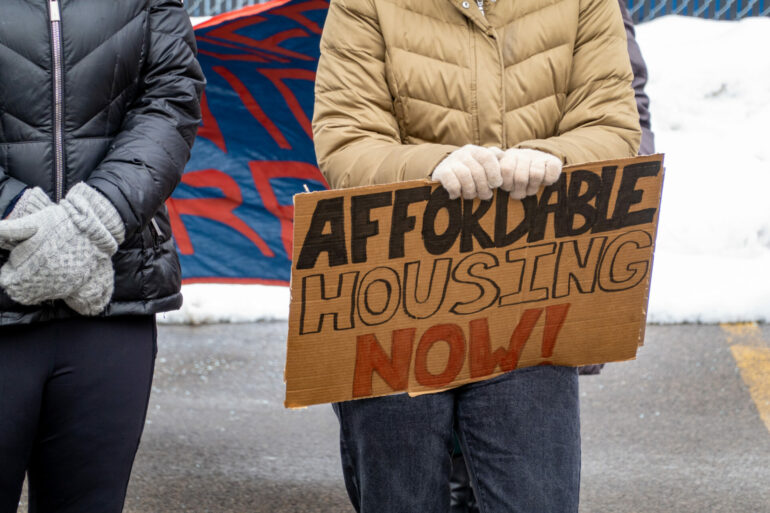The gap between the rate of social and affordable housing delivery and the growth of the non-working population is now at its widest since 2019, according to research.
The divide has grown by 173% in the past year alone, with additional non-working people – defined as those aged 16 to 64 who are economically inactive and often most in need of social care – outnumbering new affordable and social housing units by 12 to one.
Analysis by property and legal data firm Search Acumen suggested that this widening imbalance points to a shortfall of almost 297,000 affordable and social homes in 2024.
The study highlighted that the number of economically inactive individuals has risen nearly 10 times faster than the increase in the working-age population since 2019.
While the figures for housing delivery focus on England, Search Acumen said the findings are reflective of broader challenges across the UK.
The research also showed that 2023 marked the highest annual population growth in more than 75 years, while affordable housing build starts dropped sharply.
The number of new affordable homes under construction fell by nearly 40% in 2024 – the steepest decline in a decade and the lowest on record.
London was particularly hard hit, with affordable housing starts falling 88% between 2022 and 2024.
Affordable Rent homes in the capital dropped to just nine units in 2024, a decline attributed to the end of the government’s 2016-23 Affordable Homes programme, which had been the main funding source.
Andrew Lloyd, managing director of Search Acumen, said: “Our research looks at trends as to whether we are building enough homes fast enough.
“We know the answer of this to be no, but what is troubling is just how far behind we really are. In England, there were approximately 4.5 million social homes, down from 5.5 million in 1979 thanks to long-term losses in demolitions, conversions, and inadequate rebuilding.
“Looking at social rent alone, over the past decade there was a net loss of 177,500 homes in England, meanwhile the waiting list climbed to 1.33 million households last year up 10% since 2022.
“Forecasts suggest this could rise to 2 million households by 2034 if social homebuilding stays unchanged. With a growing base of people not working, the mismatch between supply and demand is acute.”
He added: “For the current government, closing this gap will be hard, but Labour is keen to prove themselves and show results within their electoral term. There is hope things will change, but the complex economic backdrop of tighter margins, inflated costs and skill pressures on housebuilders weigh heavy against social need.”
The research also points to a steep decline in planning permissions for major residential developments.
Permissions granted in England were down 41% compared to peaks seen between 2016 and 2018.
Real-term spending per person by local authorities on planning and development services has also fallen by 59% since 2010, according to the Institute for Fiscal Studies.
Despite the challenges, the government’s £39bn Social and Affordable Homes programme, announced earlier this year, is being viewed as a potential turning point.
Industry analysts believe a rapid increase in social housing activity – both in new builds and transactions – is likely over the next 18 months.
Lloyd added: “I believe this is an inflection point for the sector.
“Post-war we saw government funded Local Authorities creating a housing boom – something we are about to see again under Labour, driven by social need not private enterprise.”
He also urged property lawyers to prepare for increased demand from housing associations, local authorities and registered providers as early as late 2025.
He concluded: “Lawyers on both sides of the transaction must use technology to plug the gap, there is no doubt about it. To work on social housing caseloads means high volume and low margins, where AI tools become business critical for lawyers to win at tender.
“Simply put, technology is the only way we are going to be able to deliver any large quantity of houses at pace and within the current government.”




